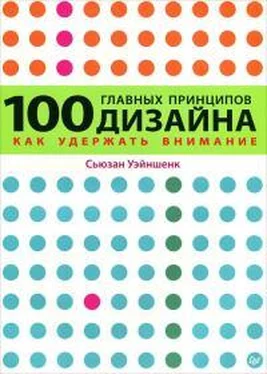Clem, Roger, and Huganir, R. 2010. “Calcium-permeable AMPA receptor dynamics mediate fear memory erasure.” Science 330(6007): 1108–12.
Cowan, Nelson. 2001. “The magical number 4 in short-term memory: A reconsideration of mental storage capacity.” Behavioral and Brain Sciences 24: 87–185.
Craik, Kenneth. 1943. The Nature of Explanation . Cambridge (UK) University Press.
Csikszentmihalyi, Mihaly. 2008. Flow: The Psychology of Optimal Experience . New York: Harper and Row.
Custers, Ruud, and Aarts, H. 2010. “The unconscious will: How the pursuit of goals operates outside of conscious awareness.” Science 329(5987): 47–50. doi:10.1126/ science.1188595.
Darley, John, and Batson, C. 1973. “From Jerusalem to Jericho: A study of situational and dispositional variables in helping behavior.” Journal of Personality and Social Psychology 27: 100–108.
Davis, Joshua I., Senghas, A., Brandt, F., and Ochsner, K. 2010. “The efects of BOTOX injections on emotional experience.” Emotion 10(3): 433–40.
Deatherage, B. H. 1972. “Auditory and other sensory forms of information presentation.” In Human Engineering Guide to Equipment Design , edited by H. P. Van Cott and R. G. Kincade. Washington, DC: U.S. Government Printing Office.
De Vries, Marieke, Holland, R., Chenier, T., Starr, M., and Winkielman, P. 2010. “Happiness cools the glow of familiarity: Psychophysiological evidence that mood modulates the familiarity-afect link.” Psychological Science 21: 321–8.
De Vries, Marieke, Holland, R., and Witteman, C. 2008. “Fitting decisions: Mood and intuitive versus deliberative decision strategies.” Cognition and Emotion 22(5): 931–43.
Dietrich, Arne. 2004. “The cognitive neuroscience of creativity.” Psychonomic Bulletin and Review 11(6): 1011–26.
Duchenne, Guillaume. 1855. De l’Electrisation Localisee et de son Application a la Physiologie, a la Pathologie et a la Therapeutique . Paris: J.B. Bailliere.
Dunbar, Robin. 1998. Grooming, Gossip, and the Evolution of Language . Cambridge, MA: Harvard University Press.
Dyson, Mary C. 2004. “How physical text layout afects reading from screen.” Behavior and Information Technology 23(6): 377–93.
Ebbinghaus, Hermann. 1886. “A supposed law of memory.” Mind 11(42).
Emberson, Lauren L., Lupyan, G., Goldstein, M., and Spivey, M. 2010. “Overheard cellphone conversations: When less speech is more distracting.” Psychological Science 21(5): 682–91.
Ekman, Paul. 2007. Emotions Revealed: Recognizing Faces and Feelings to Improve Communication and Emotional Life , 2nd ed. New York: Owl Books. ( П. Экман . Психология эмоций. Я знаю, что ты чувствуешь. СПб.: Питер, 2011)
Ekman, Paul. 2009. Telling Lies: Clues to Deceit in the Marketplace, Politics, and Marriage , 3rd ed. New York: W. W. Norton. ( П. Экман . Психология лжи. Обмани меня, если сможешь. СПб.: Питер, 2010.)
Festinger, Leon, Riecken, H. W., and Schachter, S. 1956. When Prophecy Fails . Minneapolis: University of Minnesota Press.
Gal, David, and Rucker, D. 2010. “When in doubt, shout.” Psychological Science . October 13, 2010.
Garcia, Stephen, and Tor, A. 2009. “The N efect: More competitors, less competition.” Psychological Science 20(7): 871–77.
Genter, Dedre, and Stevens, A. 1983. Mental Models . Lawrence Erlbaum Associates.
Gibson, James. 1979. The Ecological Approach to Visual Perception . Boston: Houghton Mifin.
Gilbert, Daniel. 2007. Stumbling on Happiness . New York: A.A. Knopf.
Goodman, Kenneth S. 1996. On Reading . Portsmouth, NH: Heinemann.
Haidt, Jonathan, Seder, P., and Kesebir, S. 2008. “Hive psychology, happiness, and public policy.” Journal of Legal Studies 37.
Hancock, Jefrey T., Currya, L. E., Goorhaa, S., and Woodworth, M. 2008. “On lying and being lied to: A linguistic analysis of deception in computer-mediated communication.” www.informaworld.com 45(1): 1–23.
Hancock, Jefrey T., Thom-Santelli, J., and Ritchie, T. 2004. “Deception and design: the impact of communication technology on lying behavior.” Proceedings of the SIGHCHI Conference on Human Factors in Computing Systems . New York: ACM.
Havas, David A., Glenberg, A. M., Gutowski, K. A., Lucarelli, M. J., and Davidson, R. J. 2010. “Cosmetic use of botulinum toxin-A afects processing of emotional language.” Psychological Science 21(7): 895–900.
Hsee, Christopher K., Yang, X., and Wang, L. 2010. “Idleness aversion and the need for justifed busyness.” Psychological Science 21(7): 926–30.
Hubel, David H., and Wiesel, T. N. 1959. “Receptive felds of single neurones in the cat’s striate cortex.” Journal of Physiology 148: 574–91.
Hull, Clark L. 1934. “The rats’ speed of locomotion gradient in the approach to food.” Journal of Comparative Psychology 17(3): 393–422.
Hupka, Ralph, Zbigniew, Z., Jurgen, O., Reidl, L., and Tarabrina, N. 1997. “The colors of anger, envy, fear, and jealousy: A cross-cultural study.” Journal of Cross-Cultural Psychology 28(2): 156–71.
Hyman, Ira, Boss, S., Wise, B., McKenzie, K., and Caggiano, J. 2009. “Did you see the unicycling clown? Inattentional blindness while walking and talking on a cell phone.” Applied Cognitive Psychology . doi:10.1002/acp.1638.
Iyengar, Sheena. 2010. The Art of Choosing . New York: Twelve.
Iyengar, Sheena, and Lepper, M. R. 2000. “When choice is demotivating: Can one desire too much of a good thing?” Journal of Personality and Social Psychology 70(6): 996–1006.
Ji, Daoyun, and Wilson, M. 2007. “Coordinated memory replay in the visual cortex and hippocampus during sleep.” Nature Neuroscience 10: 100–107.
Johnson-Laird, Philip. 1986. Mental Models . Cambridge, MA: Harvard University Press.
Kahn, Peter H., Jr., Severson, R. L., and Ruckert, J. H. 2009. “The human relation with nature and technological nature.” Current Directions in Psychological Science 18: 37–42.
Kang, Neung E., and Yoon, W. C. 2008. “Age– and experience-related user behavior diferences in the use of complicated electronic devices.” International Journal of Human-Computer Studies 6 6: 425 – 37.
Kanwisher, Nancy, McDermott, J., and Chun, M. 1997. “The fusiform face area: A module in human extrastriate cortex specialized for face perception.” Journal of Neuroscience 17(11): 4302–11.
Kawai, Nobuyuki, and Matsuzawa, T. 2000. “Numerical memory span in a chimpanzee.” Nature 403: 39–40.
Keller, John M. 1987. “Development and use of the ARCS model of instructional design.” Journal of Instructional Development 10(3): 2–10.
Kivetz, Ran, Urminsky, O., and Zheng, U. 2006. “The goal-gradient hypothesis resurrected: Purchase acceleration, illusionary goal progress, and customer retention.” Journal of Marketing Research 39: 39–58.
Knutson, Brian, Adams, C., Fong, G., and Hummer, D. 2001. “Anticipation of increased monetary reward selectively recruits nucleus accumbens.” Journal of Neuroscience 21.
Koo, Minjung, and Fishbach, A. 2010. “Climbing the goal ladder: How upcoming actions increase level of aspiration.” Journal of Personality and Social Psychology 99(1): 1–13.
Krienen, Fenna M., Pei-Chi, Tu, and Buckner, Randy L. 2010. “Clan mentality: Evidence that the medial prefrontal cortex responds to close others.” The Journal of Neuroscience 30(41): 13906–15. doi:10.1523/JNEUROSCI.2180-10.2010.
Читать дальше
Конец ознакомительного отрывка
Купить книгу












